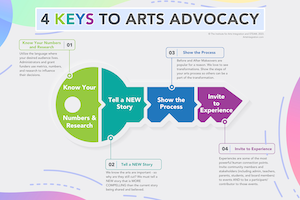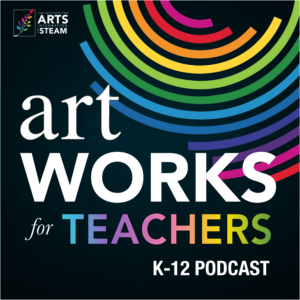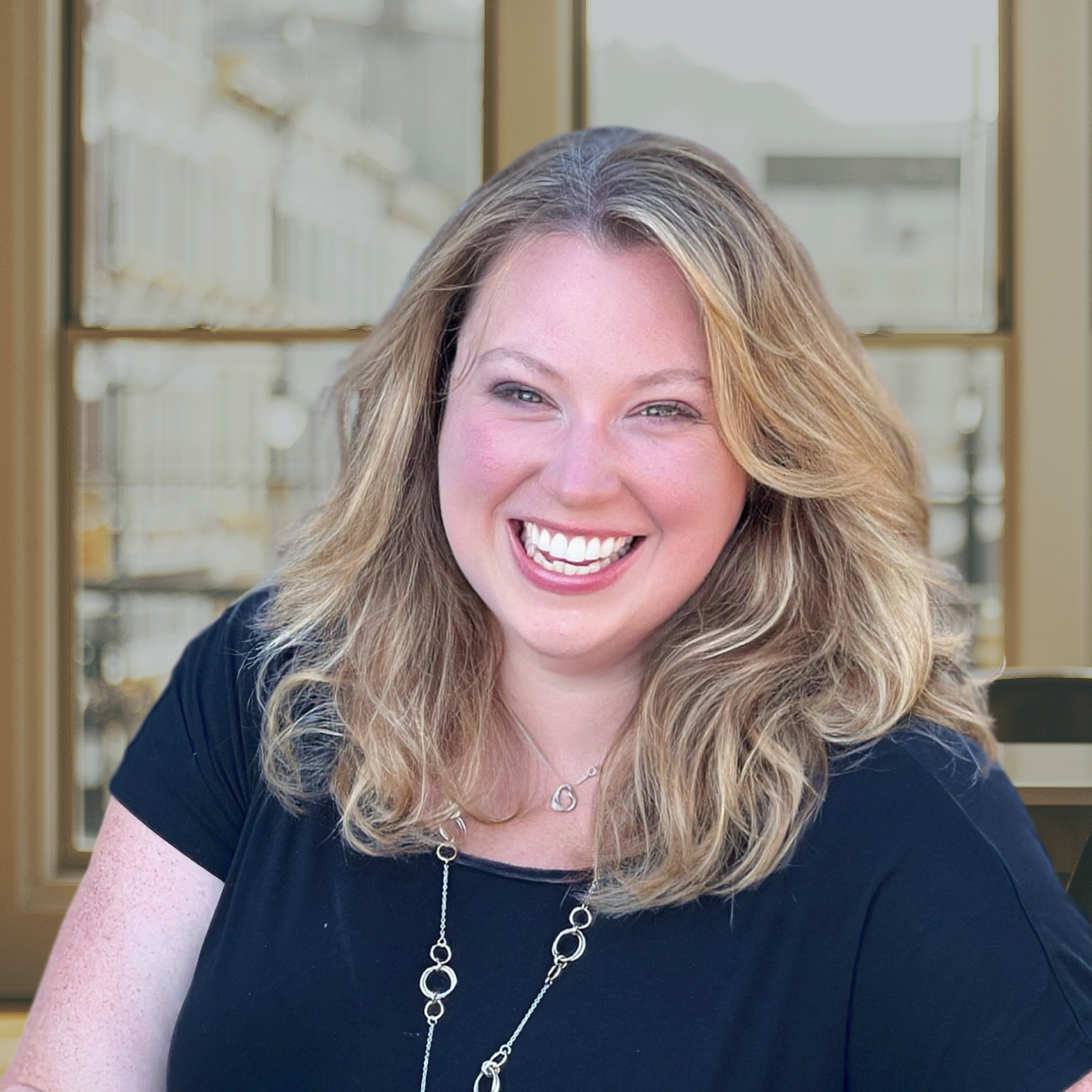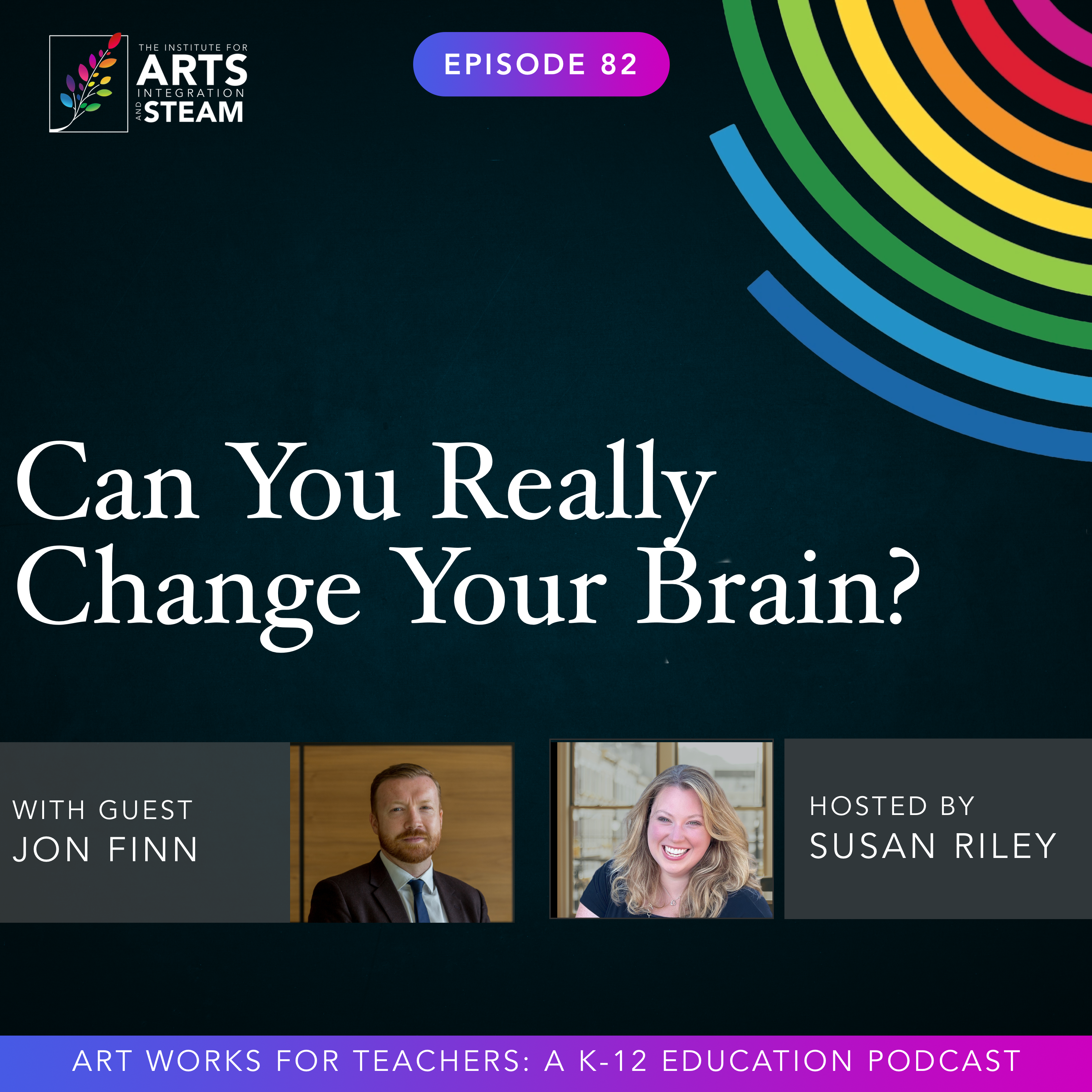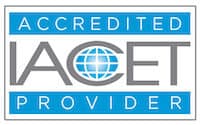ART WORKS FOR TEACHERS PODCAST | EPISODE 026 | 29:31 MIN
4 Keys to Arts Advocacy
Enjoy this free download of the 4 Keys to Arts Advocacy resource.
And I think people who have been really interesting, and I hope that you have found as much value in their conversations as I have over the last couple of months. But I’m gonna be honest, I’m excited that it’s just you and me today. So today we’re actually gonna focus on arts in our school’s month.
It is March at the time of this recording, the beginning of March actually when I’m recording. And we’re heavy into arts in our schools month already for the month of March. As you know, we have music in our schools and art in our schools and dance in our schools, and so we just combine it all and to say, arts in our schools month.
It’s also Women’s History Month. And so as a woman, I love all hearing all of the stories of women who are doing things, the people who have done them in the past that I may have not have heard of. People that are up and coming that I wanna get to know more about. So there’s a lot going on in March.
And so I wanted to focus on advocacy since it’s one of the months where, you know, all of the things are being celebrated. And I think one of the ironic components to the month of March in education is that we celebrate the arts, and yet it is also the start of testing season for most schools.
And if you are an educator in a school right now, you know that testing is king. And oftentimes the arts get pushed aside in place of getting ready for these statewide tests, particularly after Covid. You know, there’s this period of time during Covid where we didn’t have tests because, you know, we were all home and we were teaching remotely.
And so the states were like, yeah, we’re not gonna give tests this year. And we all seemed to manage to do. And yet we’re back. We’re back, and we’re back in schools. And that means we’re back to testing. And I will tell you it’s heartbreaking to go into schools where testing is so stressful right now. My team and I have been in schools over the last couple of months working in some in-person professional development helping schools to kind of leverage the arts as a way forward in what is currently a mess, and particularly in looking into closing learning gaps with literacy and math and science, and certainly arts for art’s sake is something that I want us to celebrate. Particularly this month, but also the understanding that the arts as a byproduct can have this impact on academic achievement.
And if we’re intentional about it can be used to fuse understanding in a new way for students that really helps them to not only deeply know and understand their learning, but to apply it in a whole new way, which I think is one of the most powerful things that the arts do. And certainly it’s one of the reasons that we advocate for them, but in the schools that we’ve been visiting, I mean, teachers are breaking down crying because they know that their students are not gonna pass the reading assessment this year.
There’s just no way. It’s too big of a gap, and there’s been too much learning loss that has happened and the standards didn’t go anywhere. Right. And so we’re still having to measure to these things that are not realistic. And so, like I said, I find it really ironic that we celebrate the arts and their impact and we acknowledge how important they are in the same month, where we often push them aside for the test.
And what’s really incredible about that is that if we were to stop pitting the two against each other, we would see students who academically, socially, emotionally, and creatively thrive, in tandem. And so that’s what I, that’s the message that I want us to bring forth in this month that we don’t have to be one or the other, it can be both. And so this is where advocacy becomes a really big deal. We need to continue to have these stories, continue to share the process, continue to advocate for what’s important with the arts. There are some bills right now in Congress from the arts organizations, the national arts organizations.
There are exciting possibilities to ensure that funding is made available for arts programs in all schools, not just in schools that are already well off, but in Title I schools, in rural schools and schools, with students with a variety of language needs and special needs and gifted needs. All students, regardless of their background, should have equitable access to the arts.
And so there’s lots of bills being introduced right now, and hopefully that will pass. But one of the things that we learn every time that we introduce a new bill, or every time that we are asking for more funding for the arts, because we know of their impact… It’s, we can never let go of the pedal.
You know, you have to continue to have your foot on the gas pedal at all times. And quite honestly, that’s stressful. And it’s difficult, like if you’ve ever tried to drive for a long stretch of time and have your gas, your foot on the gas pedal at the exact same speed. That can be really difficult. And I think that’s what’s been happening with the arts in particular.
But also with everything when it comes to education. Right now we are in a huge upheaval, a huge shift in education, and so it can be exhausting. And yet we can’t let go of that gas pedal, right? So how do we do that? How do we advocate and not necessarily burn ourselves out in the process, but instead continue to stoke the fire, get excited and share because that’s all advocacy really is.
So I’ve got a couple of ideas for you. Four actually very tangible, straightforward ideas on how we can all advocate for more of the arts, for arts education, for arts in education, for arts integration, for any kind of blend of the arts that you’re looking for, because the facts are there and everybody has an arts access point.
Everybody has a way in and through the arts. They’re our human connection. It’s how we express ourselves. And so let’s make sure that we still have the arts around to make sure that we can share our voices. So here’s how we do that with advocacy. The first tip I’m gonna share is to know your numbers and to know your research.
And so here’s the thing, when we talk about, especially if you’re an educator who has ever taken a research class. Lots of times we kind of inwardly groan like, “Ooh, that’s a lot.” It takes a lot to research to make sure that we’re digging in far enough to make sure that we’re, you know, APA rules, all of those things that we had during grad school where we had those research classes.
You have to have so much research. You have to make sure it’s documented in such a way. You have to make sure that you cite it properly. It all comes roaring back whenever we say, you need to know your research. You need to have research to back up your stance. Right? And so, I don’t want us to necessarily go down that rabbit hole citing all of that stuff. We can look that up. That’s what Google is for. And quite honestly, that’s what AI is for. The artificial intelligence, not arts integration, that when we talk about things like ChatGPT – which is a whole other podcast episode, my friends, it’s coming – but when we talk about artificial intelligence tools and the positive ways that we can use them. Things like citing our research is certainly one of those ways, right? We can take that part out. When we’re looking at research, what we’re really talking about is digging into the why and to the stories that currently exist that can help to support our point. That’s all research really is.
I was actually talking with a children’s book author not too long ago, and she was, I found her writing process to be incredibly interesting because she actually doesn’t spend that much time writing in the grand scheme of things when she’s doing her books. When she’s publishing her books, she actually spends maybe only 10% of the time writing.
The other 90% of her time is spent in research. In fact, she’s shared that when she goes into classrooms to talk about her books, she will often bring her packet of research and she’ll oftentimes share with students like the folder. You know, inches thick of research that goes into this small children’s book that’s not that many pages long and has a lot of illustrations.
And so she talks to children a lot about the need for research and looking at primary sources, particularly for research to understand, to better understand and advocate for your position in terms of what you’re writing. And the same is true of when we’re looking at research. You know, the other thing she said about the reason she had that large packet of research and only a small amount of it ever makes it really into the book… She said if she only researched what she had to, in order to make the book, she would have to include everything, whether it’s interesting or not. But the more research she does, the more she can kind of select the very best pieces of research that can help her tell her story. So I think that’s a really powerful point for us to know as advocates is to do our research and do more than just what we need.
Really dig in, look for as many resources as you can possibly find. Based on what you wanna share, if you wanna share about the impacts of having arts programs in schools, go look for research that supports that and look for as much of it as you possibly can so that you can pull the pieces that are the most interesting out when you’re ready to share.
Also, look for primary sources. Go find interviews, go find the stories of people who have been impacted by that go so that it’s more than just numbers, that it’s tactile. That’s what I learned from that children’s book author, is that research is more than just data. It’s also all of the primary sources and the things that surround that key point that you’re trying to make.
And so we have to consider, what is it that we’re trying to express? Is it about having dedicated arts programming? Is it about the benefits of arts integration? Is it about why we need to have all arts areas represented in our schools, not just visual art or music, but also dance and theater. I know for our dance and theater friends, you are constantly fighting that battle, particularly at the elementary level.
So when you’re looking for the advocacy, you want to make the number one thing about your theme, but also do your research and make sure you do a lot of it so that you can pick out the most interesting selections for when you share and also know your numbers. Because yes, we wanna make sure that our data, our research is grounded in storytelling and making sure that we’re connecting with people, but numbers speak.
Numbers, as any mathematician will tell you, numbers are just numbers, but you can allow them to tell a story, and you can’t do that if you don’t know your numbers. So it’s really important if you’re going to advocate particularly. Let’s do a real world example. Let’s say you don’t have a dedicated art or music class in your school, and that is what you wanna advocate for because you know the impact that it could have, then you need to know your numbers in terms of how many students could it potentially impact? Is it gonna impact K-5 or is it gonna impact just grades 4 and 5, if you’re elementary? Or is it going to impact a certain student group that you’re working with? Who is it going to impact?
Know that number, know how much it’s gonna cost, and then look at the return on the investment on that cost. Know the numbers of if you have these programs, what does the data tell us is the return on your investment? What do those students get to do? Who do they become? How do they, you know, influence and interconnect with, because of programs like that. And yes, there’s research around all of that. And so when you say know your numbers, it’s not just, you know a stat here or there, it’s in the personal numbers to your school or district that it’s gonna make a difference when you start to advocate. Particularly around testing time.
You know, we, our administrators and our school district leaders, they love those numbers. And so the more you can speak in that language, the better off you’ll be. Okay. Point number two is to tell a new story. We know that the arts are important. Every piece of data that we can look at for the last 50 years has shown that it, when we provide arts access, arts integration, arts enhancement, arts for art’s sake, anything to do with the arts, when we provide them in our schools, it has a statistically positive impact on our students across the board.
It gets them to school on time. There are less disruptions that happen. Behavior disruptions go way down. When we have access to the arts, we see academics improve. We see our students who become more social emotionally well, and the mental health impacts are very positive when we have access to the arts and schools. We, I mean, it’s not just academics, but it does include academics.
They’re across the board. We see positive influences for having access to the arts, and the thing is, we all know it. The research has been there for 50 years. Every time a new piece of research comes out, it gets shared. It gets celebrated, and then somehow, the arts still are the first thing on the chopping block when it comes to a tight budget season.
Why is that? Have we ever stopped to consider that? I think it’s because we’re telling the wrong story. And here’s what I mean by that. I was fortunate enough to have a conversation with Seth Godin not too long ago. And it was like a masterclass. I mean, it was 40 minutes of me just trying to remember everything that he was sharing.
And one of the pieces that he was talking to me about is the idea of storytelling. And this is where humans began. We started around campfires telling stories. It is how our brains process information when we talk about mindset. Our brains have a narrator inside of them that constantly is telling us a story.
Brené Brown tells us all the time, whenever we’re in conflict, the first question you should ask yourself is, what story am I telling myself, right? In order to understand how story is influencing our thoughts. So Seth’s point was if the story you’ve been telling is not getting the results that you want, the easy answer is you need a new story.
And the story needs to be compelling enough to replace the story that they think they already know. This is a really powerful thought in understanding when it comes to advocacy. And I could probably spend the entire episode just on this point alone. I won’t but I probably could because it’s that powerful.
So if we need to tell a new story, then the next question becomes: what is the most compelling story we could tell about the advantages of the arts? That a) hasn’t been really revealed before; or b) is revealed in a way that somehow clicks when the old story didn’t. This is, I think, gonna be the thing that arts advocates need to spend the most time on.
Because obviously we have all of this positive data and we continue to keep sharing it and it doesn’t seem to make a difference when the money comes down to it. And we are looking at budgets for schools and what gets included and what doesn’t. And here’s the interesting thing, if a school was using a reading program that was producing all of these amazing results… that it’s improving social, emotional health, it’s lowering classroom behavior disruptions, it’s improving attendance rates, it’s improving your academics across the board, not just in that area… don’t you think that every school in the world would be using that reading program? You know they would, right. The same for math. So why is it different for the arts?
I think it’s because internally we somehow still do not respect the arts themselves. And so part of telling the story is featuring how is the economy the thing that generates the revenue that allows us to have the programs in our schools in the first place? How does the economy, how is it impacted by having the arts and what do the arts look like?
We still, I think, have this myth that if you are a creative professional, you’re a starving artist, and the two are not the same. We are moving to a creative economy. And so we need to change how we speak about jobs and the economy going forward. We’re still stuck in this mentality of, that it’s okay to sacrifice the arts because I gotta get my kid to learn how to read, write, and do math.
Well, I hate to break it to you but your students can learn how to read, write, and do math through the arts as well, right? It’s not gonna impede them from doing that. And in fact, knowing how to read, write, and do math, what jobs does that afford you in the next 20 years? I don’t know that we can answer that question. Not with artificial intelligence and what we’re seeing coming down the road.
Is it really that critical at this juncture that we’re spending all of this time, and not only in those subjects – and I don’t wanna dismiss those subjects – I think that those subjects are absolutely necessary. But it’s about how to think. It’s about how to think mathematically, how to think like a writer, how to think like a reader, how to pull those things together.
What does literacy look like? How do we think through mathematical problems? Because a calculator can do the arithmetic for you now, and so this is where we need to change our story. We need to tell a more compelling story, something that is immediate, that is going to spark an understanding and an urgency for change. That’s number two.
Number three. This is a little bit easier. I think telling the story is a hard one. I think it needs to get done, but I think it’s a hard one. Here’s something that’s a little easier and that you could do right away. Show the process. Everybody likes to see a good makeover show, right?
Dream Home Makeover, Marie Kondo, a makeover of your closet system. Everybody likes a great makeover. So when you see the process, it’s really what a makeover is from where you start to where you end with an arts project. Whether that’s a visual art clay project that you’re working on in your classroom, a composition that you created in your dance class, a choral concert in your music classroom, or an arts integration project that you did in your science.
Show the process. We gotta get better at this. We gotta get better at taking pictures, at taking videos, at having the kids walk us through each part and then sharing them out, showcasing each part of the process. Because in that, our story, our, our brains can tell a story. We can piece it together and we can build the understanding of and seeing what our students are learning, how they’re using all of this knowledge to create something new.
Sharing the process is so important. And now I feel like I went on a rampage for number two and I cut number three short . But I think I don’t need to go much further because I think you, we all understand as educators that the process is important and not just the final product. And I know that we love to show the product pieces at the end, but what’s even better than just seeing somebody’s house staged is to see, you know, the heap that it was before you started.
And so to be able to say, wow, look at that difference. And then looking at the steps in between, because that’s where the magic lies with teachers. This is when we start to piece together. I could do that and yeah, I do that in my classroom already and, oh, I could add that piece next. That was the missing link for me. Seeing the process helps us to better understand how to implement it in our own classroom.
Step number four is to invite others to experience the power of the arts for themselves. This is a huge motivator for people who have the power to make the change, and that includes parents, administrators, school board members, students, and other teachers.
It’s all of us. And so one of the best things that you could do is invite people throughout the year, not just once, but lots of different ways of experiencing the arts for themselves. Whether it’s inviting teachers to be a part of a teacher or a faculty choir during the, you know, first 20 minutes of the day before they get started. Have choir rehearsal once a week, and then at the winter concert, the faculty gets a number that they get to do. Or it could be a parent art gallery evening that is put on at the same time as the spring arts night that you have celebrating all of the arts areas in your school. So if you have a spring arts night that has visual art featured and a choral concert and maybe a dance concert, if you have dance at your school, or a school musical or a play at the same time.
You have a parent gallery that you invited parents to contribute to, in a variety of ways. Maybe invite, you know, quilters to share some of their quilts. If they are a painter, share a painting, If they, you know, are a musician, record something and we’ll have a listening station. And so we have this gallery where we celebrate parents and how they contribute to the cause.
The same for board members. I mean, you could go on and on and on. There’s a lot of different ways you can invite people in. You can have people come visit during, you know, your arts integration projects that you’re working on, have board members come in and actually participate in the process. They love that.
But also, it creates a memory for them that’s not just going to a budget meeting yet again. It’s seeing what that budget meeting is gonna mean for the kids next year. And so that’s where the more you can invite people to experience the better. You’re not gonna get everybody that you invite.
And sometimes the first year that I tried this literally I got almost no one to come in to visit our classrooms or to participate in the faculty choir or a gallery night. But by the third year it was packed and people were asking for invitations to come in.
So that’s the other thing. And maybe it’s, it’s kind of like side note number four, don’t give up too easily. If it doesn’t work the first year the way that you envisioned, consider that your trial run. And then what could you do differently or who could you persist with for next year to invite them again so that it becomes a natural part of what you do.
If you try it and it doesn’t work the first time, keep trying. Don’t let it go. Because it’s really in the repetition where you start to see the return. So those are my four tips for arts advocacy during arts in our schools month. I hope that they’re helpful for you. I would love to hear which one of these you plan to use.
Remember it’s knowing your numbers and your research. Tell a new story that’s more compelling than the one currently being told. Show the process and invite others to experience the power of the arts. I’d love to know which one or if you’re gonna use all of them you plan to use as we move forward with arts in our schools month and beyond.
So you can find us on social media at artsintedu, and just share with us anytime what you’re doing. I’d love to see. I’d love to hear. Thanks so much.

